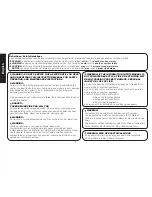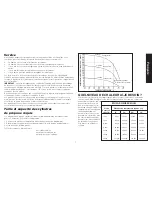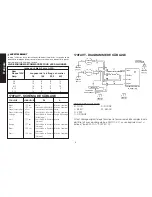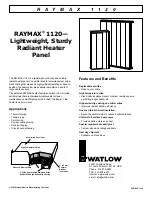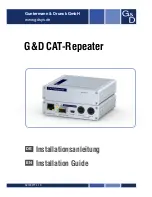
E
ng
lish
5
WARNING: RISK OF ASPHYXIATION
•
Do not use in unventilated areas.
•
The flow of combustion and ventilation air must not be obstructed.
•
Proper ventilation air must be provided to support the combustion air
requirements of the heater being used.
•
Refer to the specification section of the heater’s manual, heater dataplate,
or contact the factory to determine combustion air ventilation
requirements of the heater.
•
Lack of proper ventilation air will lead to improper combustion.
•
Improper combustion can lead to carbon monoxide poisoning leading to
serious injury or death. Symptoms of carbon monoxide poisoning
can include headaches, dizziness and difficulty in breathing.
•
A periodic sniff test around the heater or at the heater’s joints; i.e. hose,
connections, etc., is a good safety practice under any conditions. If
you smell even a small amount of gas, CONTACT YOUR FUEL GAS
SUPPLIER IMMEDIATELY.
Fuel Gas Odor—Fuel Leaks
LP gas and natural gas have man-made odorants added specifically
for detection of fuel gas leaks. If a gas leak occurs you should be able
to smell the fuel gas. Since Propane (LP) is heavier than air you should
smell for the gas odor low to the floor. ANY GAS ODOR IS YOUR SIGNAL
TO TAKE IMMEDIATE ACTION!
WARNING
•
Do not take any action that could ignite the fuel gas. Do not operate any
electrical switches. Do not plug in or disconnect any power supply or
extension cords. Do not light matches or any other source of flame. Do not
use your telephone.
Odor Fade Warning
•
Some people cannot smell the odor of the man-made chemical added
to propane (LP) or natural gas. You must determine if you can smell the
odorant in these fuel gases.
•
Learn to recognize the odor of propane (LP) gas and natural gas. Local
propane (LP) gas dealers will be more than happy to give you a scratch and
sniff pamphlet. Use it to become familiar with the fuel gas odor.
•
Smoking can decrease your ability to smell. Being around an odor for a
period of time can affect your sensitivity to that particular odor. Odors
present in animal confinement buildings can mask fuel gas odor.
•
The odorant in propane (LP) gas and natural gas is colorless and the
intensity of its odor can fade under some circumstances.
•
If there is an underground leak, the movement of gas through the soil can
filter out the odorant.
•
Propane (LP) gas odor may differ in intensity at different levels. Since
Propane (LP) gas is heavier than air, there may be more odor at lower levels.
•
Always be sensitive to the slightest gas odor. If you continue to detect any
gas odor, no matter how small, treat it as a serious leak. Immediately go into
action as discussed previously.
Odor Fading—No Odor Detected
•
Get everyone out of the building and away from the area immediately.
•
Close all propane (LP) gas tank or cylinder fuel supply valves, or the
main fuel supply valve located at the meter if you use natural gas.
•
Propane (LP) gas is heavier than air and may settle in low areas. When
you have reason to suspect a propane leak, keep out of all low areas.
•
Use your neighbor’s phone and call your fuel gas supplier and your fire
department. Do not re-enter the building or area.
•
Stay out of the building and away from the area until declared safe by
the firefighters and your fuel gas supplier.
•
FINALLY, let the fuel gas service person and the firefighters check for
escaped gas. Have them air out the building and area before you return.
Properly trained service people must repair any leaks, check for further
leakages, and then relight the appliance for you.
15. Use only the electrical power specified. The electrical connection and grounding
must comply with National Electrical Code - ANSI/NFPA 70 (USA) and CSA
C22.1 Canadian Electrical Code, Part 1 (Canada).
16. Use only a properly grounded 3-prong receptacle or extension cord.
17. Do not move, handle or service while hot or burning.
18. Do not adjust the heater combustion tube elevation while heater is running or
hot. Adjustments to elevation should only be made after the heater has cooled
to touch.
19. Use only in accordance with local codes or, in the absence of local codes, with
the Standard for the Storage and Handling of Liquefied Petroleum Gases ANSI/
NFPA 58 and CSA B149.1, Natural Gas and Propane Installation Code.


